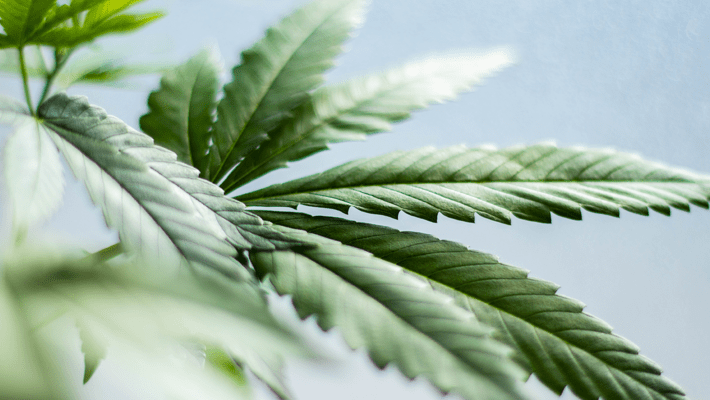
What is Cannabidivarin or CBDV?
Published on 9/20/21
Tetrahydrocannabinol (THC) and cannabidiol (CBD) are the big players when it comes to the compounds that make up cannabis and hemp, but there are hundreds of others that are present in lower amounts and play their own key roles to determine how marijuana affects the body. Cannabidivarin (CBDV) is a great example of a cannabinoid that does not get a lot of press but could have substantial potential medical benefits.
What is CBDV?
The first thing to note about CBDV is that it is a homolog to CBD, which means that it is very similar to CBD, but has a slightly different molecular structure. CBDV has a propyl chain and CBD has a pentyl chain; as a propyl cannabinoid, the CBDV cannabinoid has a three-carbon side chain. Like CBD, CBDV does not have any intoxicating properties, so it will not produce the euphoria or intense sedation that THC can deliver, but the minor difference in structure means that CBDV effects differ slightly from those of CBD. CBDV was first discovered in 1969 and is found mostly in the indica landrace strains of Pakistan, India, Nepal and Mexico, where strains evolved naturally without interference or experimentation from crossbreeding. CBDV is also more likely to be present in strains that have high CBD and low THC content, as well as in hemp.
CBDV and the Body
 Unsplash
UnsplashAlthough restrictions on cannabis research are slowly ebbing away, there are still laws in place at the federal and state levels that limit the amount and quality of cannabis that scientists can access to do their work. Thankfully, there are a few studies that have been done that investigated how CBDV affects the body and how it might provide medicinal benefits. The most promising discovery indicates that the CBDV cannabinoid can mitigate seizures and other convulsant actions in the body associated with epilepsy.
When THC and CBD enter the body they interact with the CB1 and CB2 receptors in the central and peripheral nervous systems. When CBDV is consumed, it also activates the TRPV1 receptors that are responsible for monitoring and regulating pain sensations and internal body temperature. TRPV1s is an ion channel in the central nervous system and the peripheral nervous system, and CBDV desensitizes the channel, which causes a reduction in neuronal hyperexcitability. This, in turn, minimizes the chances of seizures and convulsant activity found in those who suffer from epilepsy.
A study from 2013 also found that the cannabinoid can act to curb nausea in rats. The scientists discovered that when CBDV links with CB1 receptors, it prompts them to prevent a nausea response, in much the same manner as THC.
In 2019, a study was conducted to determine the effects of CBDV on brain excitation and the inhibition systems in adults with and without autism spectrum disorder (ASD). The researchers were able to show that CBDV shifts some levels of the brain's primary excitatory metabolite glutamate (Glx) in both neurotypical and autistic brains, but there was a significant response variability in the subjects with ASD. This finding indicates hope for some sort of potential option for ASD treatment in the future, but also leaves several questions unanswered about how to manipulate CBDV to provide a more uniform response.
Rett syndrome (RTT) is a rare and horrific type of neurodevelopmental disorder that is found in girls and characterized by severe behavioral and physiological symptoms like loss of speech and coordination. It is caused by mutations in the X chromosome. In 2018, a study was published that provided some measure of hope to families coping with RTT. Scientists working with mice with RTT noted that when treated with CBDV, the cannabinoid injection "restored the compromised general health status, the sociability and the brain weight in RTT mice. Partial restoration of motor coordination was also observed."
CBDV has also been found to possibly benefit patients with Duchenne muscular dystrophy (DMD). DMD creates chronic inflammation and irreversible skeletal muscle degeneration and damage. Mice that received CBDV enjoyed reduced inflammation, enhanced muscle function, and improved locomotion.
CBDV has also been determined to protect cells that are damaged due to ischemic stroke, one of the three types of strokes common in humans.
CBDV for Sale
 Unsplash
UnsplashSince CBDV is relatively rare in cannabis and produced in such low amounts, it is not readily available at dispensaries. CBDV oil can, however, be found online, but be prepared to pay a hefty fee. That said, any CBDV isolate purchase should last a long time due to the strength of the product. Consumers seeking CBDV strains will have the most success if also looking for strains that are high in CBD. Dancehall, Durban Poison, Bubba Kush, Royal Medic and Shark Shock as all good options.
There are also a few CBDV strains that are being developed currently with the goal of remaining below the all-important 0.3% THC content line. Expect them (and more) to hit the market soon.
Have you used CBDV before? Share with us in the comments below!
